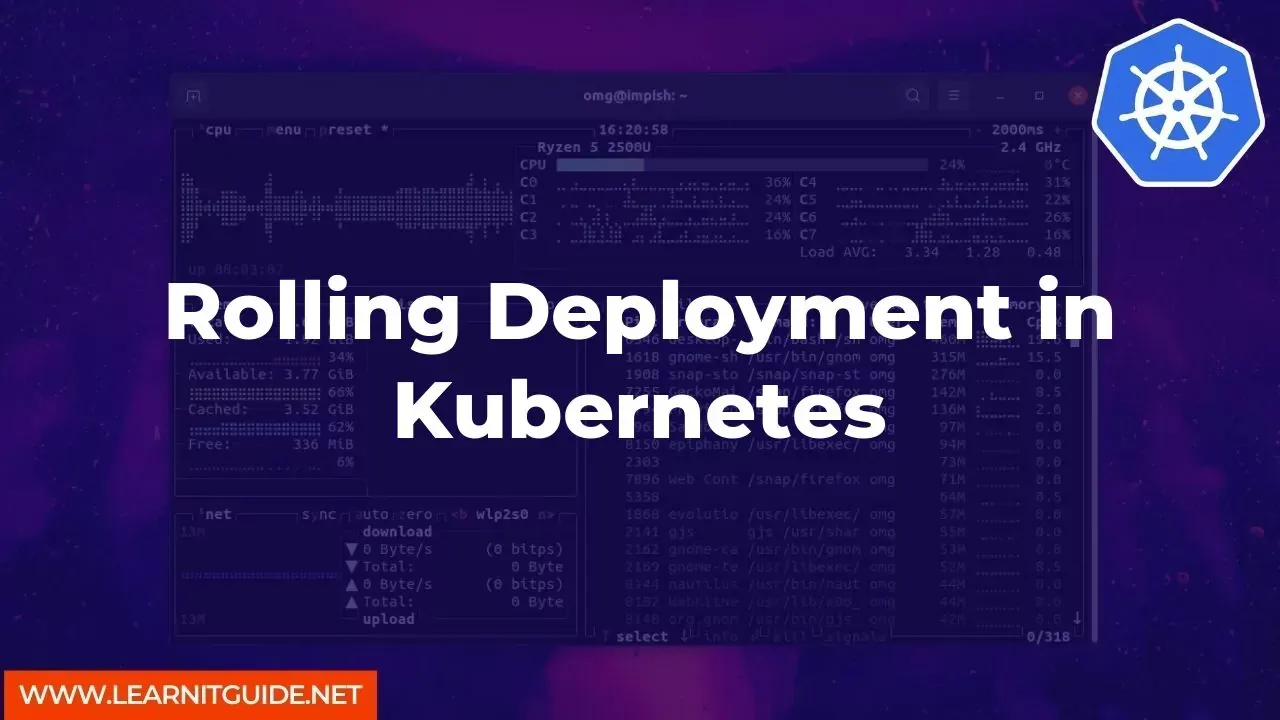Kubernetes is an open-source container orchestration tool used by many organizations to manage their containerized applications. It provides many features that make it easy to deploy and manage containerized applications, including rolling deployment.
Rolling deployment is a deployment strategy that allows Kubernetes to update an application without any downtime. It ensures that your application stays available and responsive to users while being updated. In this article, we'll dive deeper into rolling deployment in Kubernetes and see how it can be used to update applications.
Table of Contents
- What is rolling deployment?
- Advantages of rolling deployment
- How to perform rolling deployment in Kubernetes
- Rolling deployment strategies in Kubernetes
- Examples of rolling deployment in Kubernetes
What is rolling deployment?
Rolling deployment is a deployment strategy that updates an application without any downtime by updating a few instances of the application at a time. It works by creating a new replica set with the updated version of the application and gradually scaling it up while scaling down the old replica set until all instances of the application are updated.
Advantages of rolling deployment:
Rolling deployment has several advantages, including:
No downtime: Rolling deployment ensures that your application stays available and responsive to users during updates.
Rollback: Rolling deployment allows you to easily roll back to the previous version of the application if the updated version has issues.
Gradual update: Rolling deployment updates a few instances of the application at a time, reducing the risk of errors and allowing you to monitor the update process.
How to perform rolling deployment in Kubernetes:
Performing rolling deployment in Kubernetes is straightforward. Follow these steps:
Create a new replica set with the updated version of the application.
kubectl apply -f updated-replica-set.yaml
Scale up the new replica set:
kubectl scale --replicas=3 rs/updated-replica-set
Scale down the old replica set:
kubectl scale --replicas=0 rs/old-replica-set
Monitor the update process:
kubectl rollout status deployment/myapp
Rolling deployment strategies in Kubernetes:
Kubernetes provides several strategies for rolling deployment, including:
RollingUpdate: This is the default strategy, which updates a few instances of the application at a time.
Recreate: This strategy terminates all instances of the old replica set before creating new ones with the updated version of the application.
BlueGreen: This strategy creates a new environment with the updated version of the application and switches traffic to it once it's ready.
Examples of rolling deployment in Kubernetes:
Let's take an example of how to perform rolling deployment in Kubernetes using the RollingUpdate strategy. Follow these steps:
Create a deployment:
kubectl create deployment myapp --image=myapp:v1
Scale up the deployment:
kubectl scale --replicas=3 deployment/myapp
Update the deployment:
kubectl set image deployment/myapp myapp=myapp:v2
Monitor the update process:
kubectl rollout status deployment/myapp
Rolling deployment in Kubernetes is a powerful feature that helps you update your application without any downtime. With the steps and strategies discussed in this article, you can easily perform rolling deployment in Kubernetes and keep your application up-to-date with the latest features and bug fixes.
Related Searches and Questions asked:
That's it for this post. Keep practicing and have fun. Leave your comments if any.








0 تعليقات